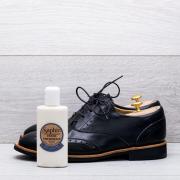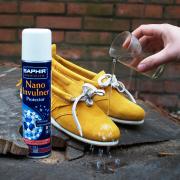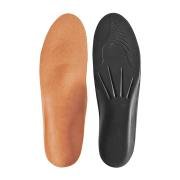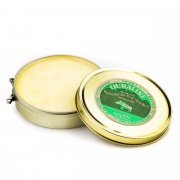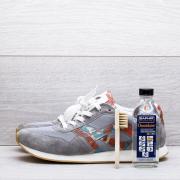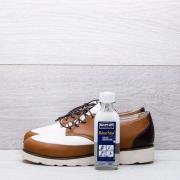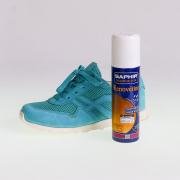How to protect shoes from salt and reagents
Preamble
Sodium chloride, mixed with other salts, sand or clay - the so-called technical salt - is used as an antifreeze in winter against the ice. Salt sprinkled on sidewalks, though it negatively affects the leather shoes, leads to corrosion of pipes, bridges, cars, causes an allergy, harms historic monuments, animals and the environment in general.
To protect your shoes from this aggressive reagent, use protective water-repellent agents, according to the material of shoes. Each new pair before the first release into a hostile salt environment should be treated with such protector not less than three times by giving shoes time to impregnate and allow it to dry after each application.
After returning home, clean the shoes from salt and mud without shelving them. The longer the shoes are not cleansed, the more difficult it will be to withdraw the salt stains.
Smooth leather
- Wipe shoes with a damp cloth;
- remove excess water with a dry cloth;
- clean all shoe seams;
- treat leather vinegar and water solution (two parts water to one part vinegar);
- wipe with a dry cloth shoes, paying particular attention to the joints and seams;
- leave at room temperature before full drying.
To remove salt stains you can also use sunflower or castor oil. Apply oil on the dry shoe surface and leave until morning. Another method of treating a salt stains - water-alcohol solution. Wipe spots and they will disappear.
When the shoes are completely dry, make sure that all the salt stains cleaned. If all efforts does not succeed, paint traces using paint-spray for smooth leather. Then apply shoe polish, let it soak, and then polish the surface with a soft cloth.
Suede, velour or nubuck
Before you begin to clean suede shoes, be sure that it is completely dry.
- remove mud with a special brush or eraser;
- if brushing is not enough, use a special cleaner for suede;
Cleanser can be made with your own hands. Dissolve some soap in the water and add a few drops of ammonia. Make foam and apply the lather on pollution with a sponge. Then, remove the foam with the remnants of mud by clean sponge or soft cloth.
- wipe shoes with solution of vinegar and water (one teaspoon of vinegar per gallon of water) or soak the brush for suede in vinegar and wipe the stains;
- leave them at room temperature to complete drying;
- wipe shoes with a soft damp cloth and dry thoroughly.
In particularly difficult cases you can hold suede shoes over the steam. Then lift the suede nap with a special brush or your old toothbrush.
If you have not succeed to deduce the stains, paint over these places with a special paint for suede suitable by hue.
Patent leather
It should be remembered that patent leather shoes are not designed for wearing in bad weather, and does not tolerate high (more than 25 degrees) and low (less than 5 degrees), temperature of the environment. Therefore, shiny pair should be postponed until better times.
Textile or fabric
Textile shoes are also more suitable for dry and warm periods than for wet and cold. Treat these shoes with special water-repellent in small quantities. To remove the salt from textile shoes use a cloth soaked in a solution of water and ammonia (one cup of water to one teaspoon of ammonia). Wipe the shoes with a cloth soaked in water. Allow to dry.




